Introduction: Obesity in Canada
JENNY ELLISON, DEBORAH MCPHAIL, AND WENDY MITCHINSON
Canada is currently in the grip of an epidemic of obesity that is sweeping the country from coast to coast to coast. More than one in four Canadian adults is obese according to height/weight, or Body Mass Index (BMI) data, and almost 18 per cent of Canadas children and youth are obese (Public Health Agency of Canada [PHAC] and Canadian Institute of Health Information [CIHI] 2011). These are alarming statistics given that obesity leads to and/or is associated with chronic illnesses such as diabetes, hypertension, cardiovascular disease, mental illness, and some forms of cancer (PHAC and CIHI 2011; ). The obesity burden threatens to crush Canadas public health care system, which is simply too underfunded to deal with the massive onslaught of disease that rising obesity rates will surely bring the Public Health Agency of Canada recently calculated that obesity has cost Canada $4.6 billion dollars, an estimate they describe as conservative (2011, 2). It is clear that drastic interventions are needed to improve the health behaviours of Canadians, whose unhealthy eating habits and lack of physical activity are at the root of this obesity problem. Or at least thats one perspective.
Other perspectives on obesity in Canada suggest that obesity is perhaps not the problem it has been made out to be. these scholars argue that obesity is a discursively constructed category, and not simply or only a biological condition. As such, obesity is a culturally produced idea with social effects. The panic surrounding obesity has less to do with the actual health problems precipitated by excess body fat and more to do with reassertions of the status quo and normative identities pertaining to gender, race, class, and sexuality.
Such a critique is increasingly supported by medical research in Canada and elsewhere, which suggests that overweight and obese people are not necessarily unhealthy. For example, ). Such research shows that the relationship between obesity and health is complex, and that there is limited medical consensus on the subject.
Obesity, then, is a hot topic in Canada, and a site for rich analytical and critical thought. Until now, however, critical commentary on fat and obesity in Canada has been dispersed in books by individual authors, journal articles, PhD dissertations, and conference presentations: no attempt has been made to bring together the array of creative scholarship on the obesity epidemic in Canada into a single collection. This collection thus fills a gap in Canadian literature, gathering together ). To study the nation, therefore, remains an important scholarly endeavour, and an understanding of the historical and ongoing context of obesity debates in Canada will provide the broader context for the chapters in this collection.
Obesity in Canada: Historical Perspectives
In 1864 Francois Dancels diet manual Obesity or Excessive Corpulence: The Various Causes and the Rational Means of Cure was translated and published by W.C. Chewett and Company in Toronto. Written for the many individuals of both sexes who are afflicted with an excessive development of fat, rendering the ordinary duties of life not only irksome but oft-times impossible, the manual offered an easy method of reducing obesity (v). Dancel claimed fatness was of
little importance, in so far as the happiness of men is concerned; but as regards the gentler sex, such is by no means the case Beauty, the richest gift of nature, deserves to be carefully guarded by those who happily possess it; corpulence [is] its enemy It is a painful sight to witness the many instances of women, who, though still of youthful years lose by degrees, in the midst of an overwhelming fat, all this relative and graceful harmony, and whose ever increasing corpulence serves only to render them ill-favoured and repulsive. (3)
Following this lengthy exposition of the risks obesity posed to women, Dancel explored the physical consequences of excessive corpulence, presumably for both sexes, which included sterility, hernia, headaches, heart problems, hysteria, varicose veins, and somnolence (7, 9, 17, 21, 30, 31, 40, 41). He then laid out his method of weight reduction: patients must eat primarily meat, with small quantities of vegetable matter. The reasoning behind this was that water fruits and vegetables have an especial tendency to develop fat. For this reason, Dancel also recommended reducers abstain from drinking large quantities of water, beer, cider, brandy or wine (65). After ten or twelve days of this treatment patients experience a feeling of freedom from oppression, and already reduction of fat has become apparent. According to Dancel, continuing this treatment for six months would result in a marked improvement of the general health (69).
Published over 150 years ago, Dancels diet advice appears laughable for its focus on meat and its suggestion to abstain from drinking water. And yet it illuminates important continuities in the public and academic conversation about obesity. For example, Dancel tends to see beauty as synonymous with slenderness and slenderness as synonymous with health, reflecting a gendered understanding of obesity. Dancels manual also illustrates how those who find excess weight problematic conflate bio-medical, social, and cultural concerns about obesity. His use of the terms obesity and fatness, for example, indicates ongoing ambivalence about the terminology used to describe those who are overweight. In his history of dieting, Hillel Schwartz argued that the range of terms for describing fatness reflects a sense of embarrassment that has blushed from language itself (1986, 89). In the twentieth century,

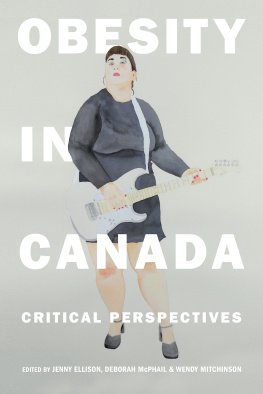

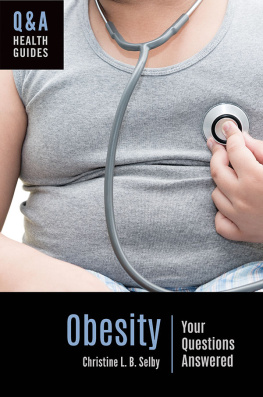
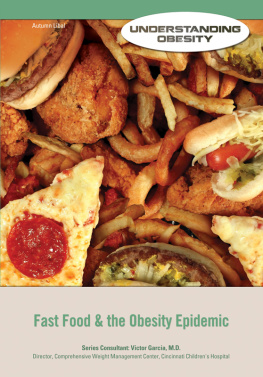
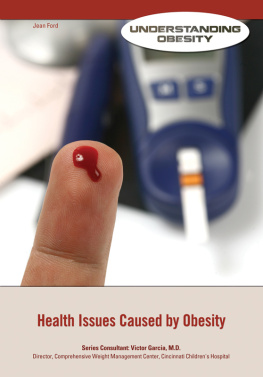
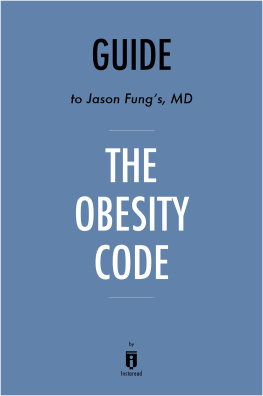
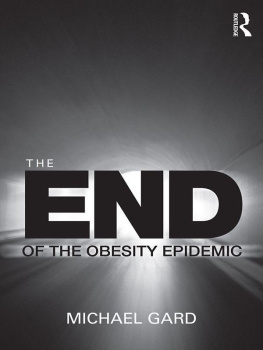
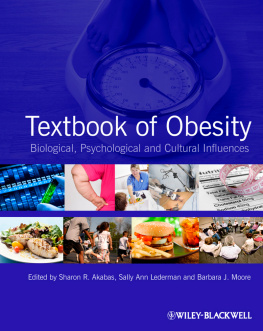
 Printed on acid-free, 100% post-consumer recycled paper with vegetable-based inks.
Printed on acid-free, 100% post-consumer recycled paper with vegetable-based inks.